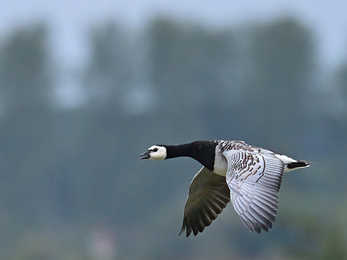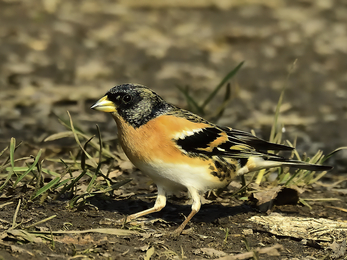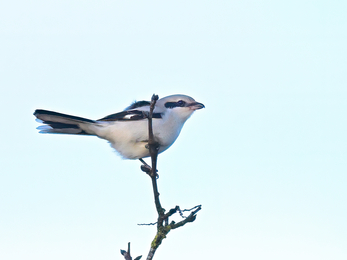Whooper swans (pictured below) nest in Iceland, then head this way when their temperature gauges point south, returning north again in the spring. They often feed on fields during the day, eating crops such as leftover potatoes and grain, before heading to roost on open water. The yellow on their face differentiates them from our resident Mute Swans. Their name is derived from the 'bugle call' they emit when flying in flocks.
Snow Patrol - making the most of wintry weather
If numbers count (pun intended) then the 'winter thrushes' must be our core customers; circa ten million fieldfares and redwings (above) arrive here during the autumn, from Scandinavia and Russia. Look for them foraging on the ground or raiding berry trees. Rowan, holly, blackthorn, hawthorn, yew and crab apple are all on the marauders' menu.
If you think you see more robins (pictured above) in winter (versus summer) it's because you do! Our resident population is joined by an army of continental cousins, who brave the North Sea crossing to spend the cold season here, in our less-harsh weather conditions.
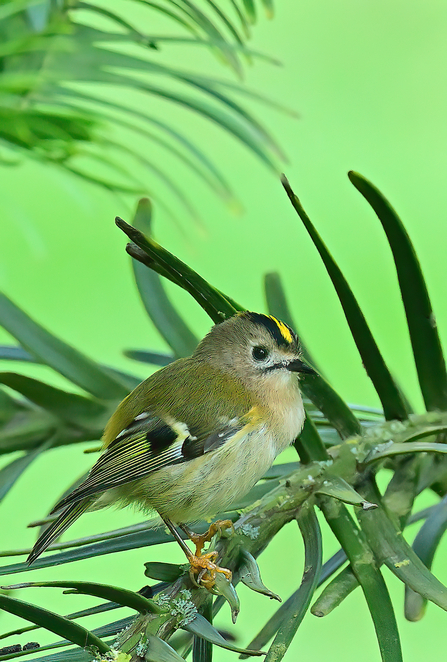
Goldcrest by Rob Bendelow
So too with the diminutive goldcrest. It's hard to imagine these tiny birds flying more than a few yards in one go, yet they traverse the North Sea in serious numbers. Furthermore, they bring their rare relative with them - the firecrest (below) is the same size, but with an eye-catching head pattern.
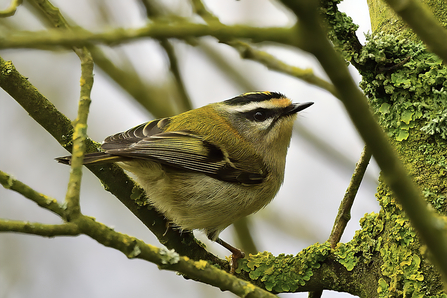
Firecrest by Rob Bendelow
As autumn ushers in winter, the UK becomes a 'geese-r-us' haven. Around 90,000 brent geese travel here from their nesting grounds in Siberia; from Russia with love! Brents have a black head/neck and grey-brown back, with a small, distinctive white neck patch. The barnacle goose is a medium-sized, sociable goose, with a black head/neck and a creamy-white face. This contrasts with it's white belly and attractive blue-grey, striped back. Barnacle geese don't actually eat barnacles; imagine that. Their name comes from a medieval notion that these birds hatched from barnacles each autumn! They actually come from Greenland and Svalbard (aka Spitsbergen).
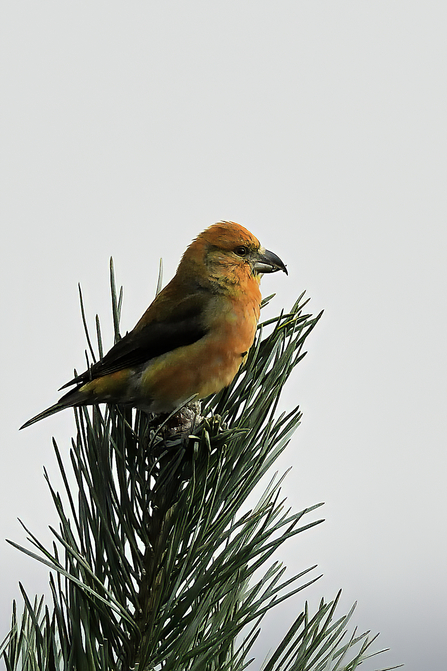
Crossbill by Rob Bendelow
Members of the finch family also favour our cold season hospitality. Many crossbills cross the North Sea to join our resident population. Their seemingly distorted bills are carefully designed to extract seeds from conifer cones.
Bramblings (pictured below) however, are not resident here; Scandinavia is their home turf. At a casual glance they resemble the chaffinch, but look again and see their dark heads, orange breasts and, in flight, white rumps. Sociable in winter, they often form flocks with Chaffinches. Europe’s largest finch is also keen to join the seasonal party.
The hawfinch is an increasingly difficult resident to see here; winter offers the best chance, when numbers increase via influxes from northern Europe. Check those tree tops, for the plump, orange-brown bird with the massive, nut-cracker beak.
The great grey shrike (pictured below) is the largest of the European shrikes and a small number come to the UK for the cold season. They are very territorial, so you're unlikely to see more than one at once. They hunt large insects and small vertebrates, including mammals, reptiles and other birds. They are also known as 'butcher birds' for their habit of impaling prey on thorns or barbed wire. This helps hold their food still as they tear into it, whilst also serving as a larder.
Our resident merlins are joined by breeding birds from Iceland over winter. Similarly, short-eared owls migrate from Scandinavia, Russia and Iceland for the same period, making winter the best time to try and see both of these rather special raptors.
An armada of northern-based ducks converge here for the delights of a British winter, with wigeon, pochard and goldeneye being popular favourites. The handsome pintail (above) flies in from northern Europe, to join our small breeding population (from East Anglia and the Scottish Isles). Similarly, teal (above) numbers swell with migrants from the Baltic and Siberia regions.
For many bird photographers (with or without thermal underwear) the number one winter visitor is...drum roll please...the waxwing (below). This glorious, starling-sized beauty looks (to me at least) like a bird from the tropics; reddish-brown with a black throat and face mask, a prominent crest, and yellow blobs of 'wax' on it's wings and tail. They arrive here from Scandinavia and Northern Europe, some years in massive numbers (called irruptions), when the population in their breeding grounds gets too big for the food available. Here's wishing you an enjoyable winter's birding, and a Happy New Year!
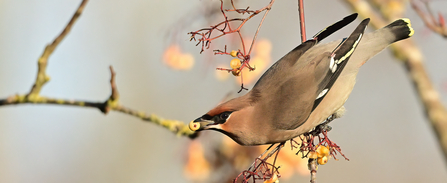
Waxwing by Rob Bendelow
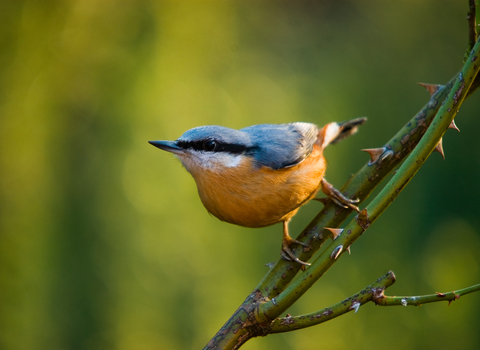
©Neil Aldridge






